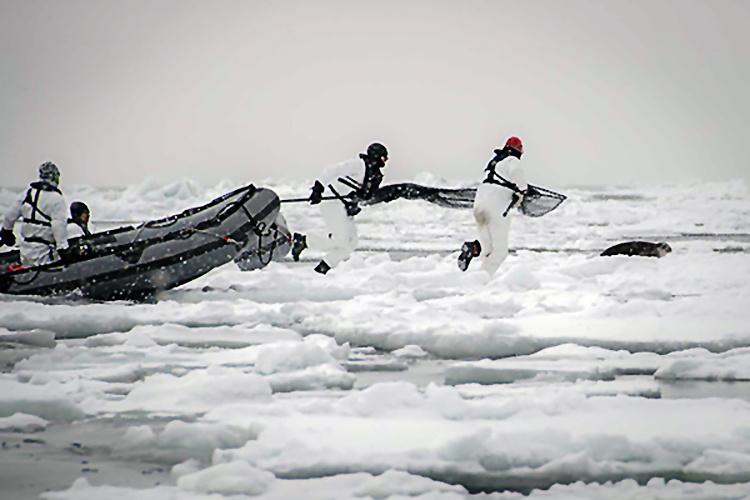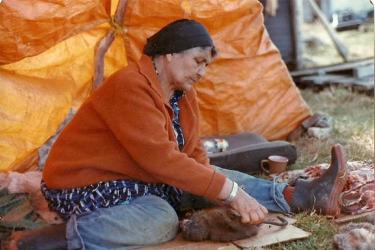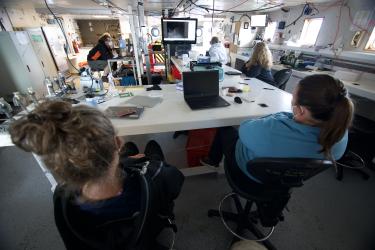
A spotted seal on ice.
To learn more about ribbon and spotted seals, which make their home on sea ice, we need to collect biological information that tells us how healthy these animals are and where they live.
With the help of satellite-linked tags, we can identify important habitats and learn more about seal behavior to help ensure the long-term survival of these two species.
The first step is to find the seals.
We begin each day conducting observations from the bridge of the Oscar Dysonwhile it navigates through areas of broken sea ice. Observers scan the ice field around the ship with binoculars, searching for seals that might be “catchable.”

Newborn spotted seal pup.
To be catchable, a seal needs to be on an ice floe that has enough open water around it for us to navigate quickly and quietly to the floe in our small inflatable boats without disturbing the seal.
Once we find a seal that we think is approachable, we ask the ship to stop and hold position. We don our dry suits and cold-weather clothing. Then we load our research equipment into four small inflatable boats, and launch the boats into the water using the ship's crane.
Each boat team consists of a boat driver and a seal catcher. One of the boats also carries our veterinarian, who closely monitors the health of captured seals.

Searching for ice-associated seals.
We observe the seal from a safe distance and devise a strategy for best approaching the animal so we aren’t detected. We try to approach the floe heading upwind and using ice ridges or hummocks on the floe as cover so the seal cannot smell or see us coming.
If the seal detects us and begins moving towards the edge of the floe, we move quickly to try to cutoff its escape. We use large, long-handled nets to catch the seal so we can attach the satellite tag and collect needed biological information.
If successful, we transfer the captured seal into a cone-shaped hoop net so we can safely restrain the seal while we work on it. After its release, we spend the rest of the day on the water, monitoring the tagged seal and looking for opportunities to tag other animals.
The success of our tagging effort depends on many factors including ice and weather conditions, the species and age of seals we're attempting to capture (ribbon seals are typically easier to tag than spotted seals, and younger seals are easier than adults), the experience level of our boat teams, and a fair amount of luck.
Given all of these challenges, we may only catch two or three seals on a good day. There are days where we aren't able to tag any seals. On our best day (in 2009), we tagged 9 seals.
So far, during this cruise, we’ve had fairly good luck. We’ve tagged 10 seals in the past four days—eight spotted seals and two ribbon seals. Collected information helps us understand how these animals are coping with changes that may be taking place in their ocean environment. It also helps resource managers ensure that adequate protections are in place for these species.
Let’s hope our luck continues for the remaining two weeks of our project!


